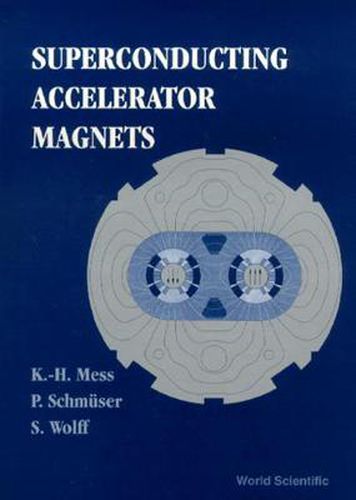Readings Newsletter
Become a Readings Member to make your shopping experience even easier.
Sign in or sign up for free!
You’re not far away from qualifying for FREE standard shipping within Australia
You’ve qualified for FREE standard shipping within Australia
The cart is loading…






This title is printed to order. This book may have been self-published. If so, we cannot guarantee the quality of the content. In the main most books will have gone through the editing process however some may not. We therefore suggest that you be aware of this before ordering this book. If in doubt check either the author or publisher’s details as we are unable to accept any returns unless they are faulty. Please contact us if you have any questions.
The main topics of the book are the superconducting dipole and quadrupole magnets needed in high-energy accelerators and storage rings for protons, antiprotons or heavy ions. The basic principles of low-temperature superconductivity are outlined with special emphasis on the effects which are relevant for accelerator magnets. Properties and fabrication methods of practical superconductors are described. Analytical methods for field calculation and multipole expansion are presented for coils without and with iron yoke. The effect of yoke saturation and geometric distortions on field quality is studied. Persistent magnetization currents in the superconductor and eddy currents the copper part of the cable are analyzed in detail and their influence on field quality and magnet performance is investigated. Superconductor stability, quench origins and propagation and magnet protection are addressed. Some important concepts of accelerator physics are introduced which are needed to appreciate the demanding requirements on field quality in large storage rings. The operational experience with the superconducting HERA collider serves as an illustration. Finally, superconducting correction coils and practical construction and fabrication methods of accelerator magnets are discussed. The physical and technical principles described in the book are substantiated with a wealth of experimental data on multipoles, persistent- and eddy-current effects, quench performance and much more.
$9.00 standard shipping within Australia
FREE standard shipping within Australia for orders over $100.00
Express & International shipping calculated at checkout
This title is printed to order. This book may have been self-published. If so, we cannot guarantee the quality of the content. In the main most books will have gone through the editing process however some may not. We therefore suggest that you be aware of this before ordering this book. If in doubt check either the author or publisher’s details as we are unable to accept any returns unless they are faulty. Please contact us if you have any questions.
The main topics of the book are the superconducting dipole and quadrupole magnets needed in high-energy accelerators and storage rings for protons, antiprotons or heavy ions. The basic principles of low-temperature superconductivity are outlined with special emphasis on the effects which are relevant for accelerator magnets. Properties and fabrication methods of practical superconductors are described. Analytical methods for field calculation and multipole expansion are presented for coils without and with iron yoke. The effect of yoke saturation and geometric distortions on field quality is studied. Persistent magnetization currents in the superconductor and eddy currents the copper part of the cable are analyzed in detail and their influence on field quality and magnet performance is investigated. Superconductor stability, quench origins and propagation and magnet protection are addressed. Some important concepts of accelerator physics are introduced which are needed to appreciate the demanding requirements on field quality in large storage rings. The operational experience with the superconducting HERA collider serves as an illustration. Finally, superconducting correction coils and practical construction and fabrication methods of accelerator magnets are discussed. The physical and technical principles described in the book are substantiated with a wealth of experimental data on multipoles, persistent- and eddy-current effects, quench performance and much more.